After 20 years spent building, then sailing our beloved 38′ ketch, a Herreshoff Nereia, on the Great Lakes and St. Lawrence River, there came a point when Louise and I agreed we were done with big-boat sailing. We wanted to be able to trailer our craft to lakes and rivers we had yet to explore. She was happy with her sea kayak; I wanted something bigger, faster, and more stable—a mothership I could keep on a trailer and ready for expeditions to Quebec’s Lower St. Lawrence and the Saguenay Fjord.I needed a break from sail, and a motor, even an electric one, was never an option. The new craft would weigh less than 100 lbs, float in a puddle, be launchable and recoverable with either trailer or dolly, and have adequate storage for camping gear, a portage cart, and a week’s provisions. It would be as fast and weatherly as an ocean kayak and considerably more stable. Ideally, it would even be able to carry a passenger in comfort.I combed the classifieds and small-craft websites and ultimately had to stop dreaming about finding the ideal boat and set my sights on building one. If I was to build, I would need to get the work done during the summer months, when I could turn our garage into my shop. Because I wouldn’t have time to loft and to build a strongback, it would have to be a stitch-and-glue kit.
Join The Conversation
We welcome your comments about this article. If you’d like to include a photo or a video with your comment, please email the file or link.
Comments (14)
Leave a Reply
Stay On Course

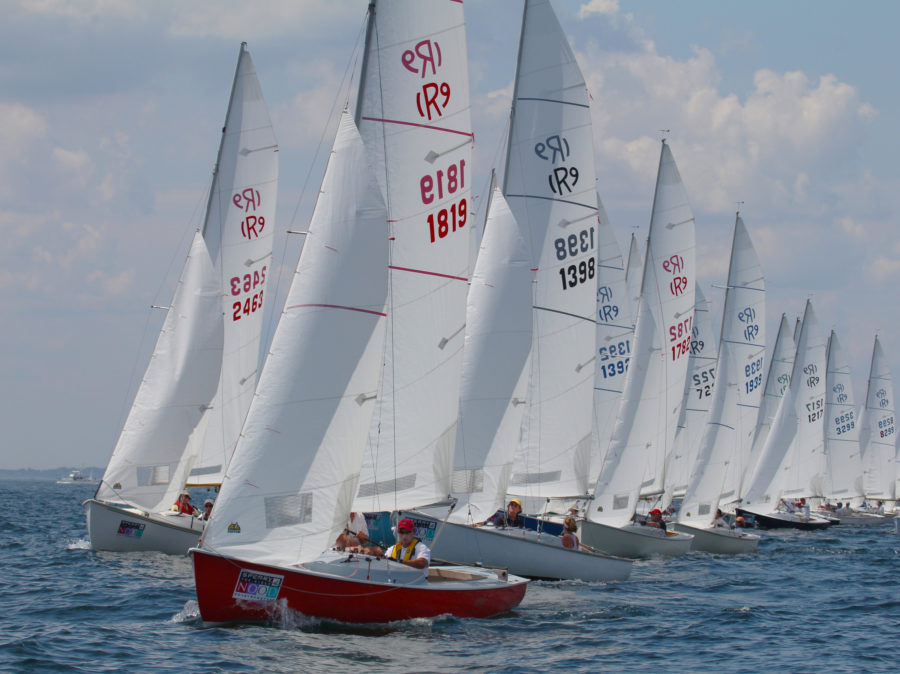
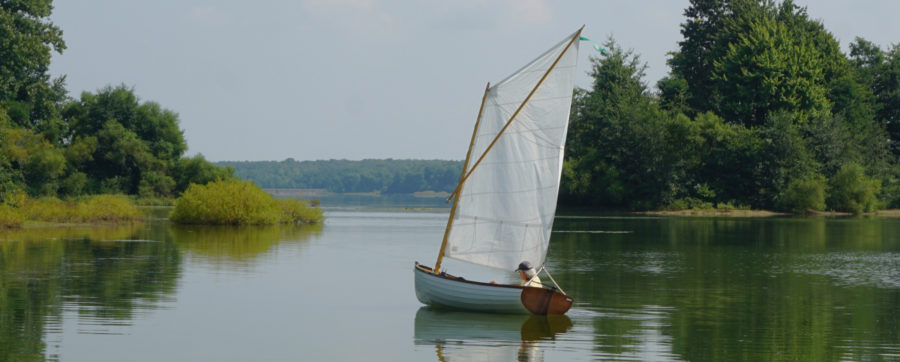
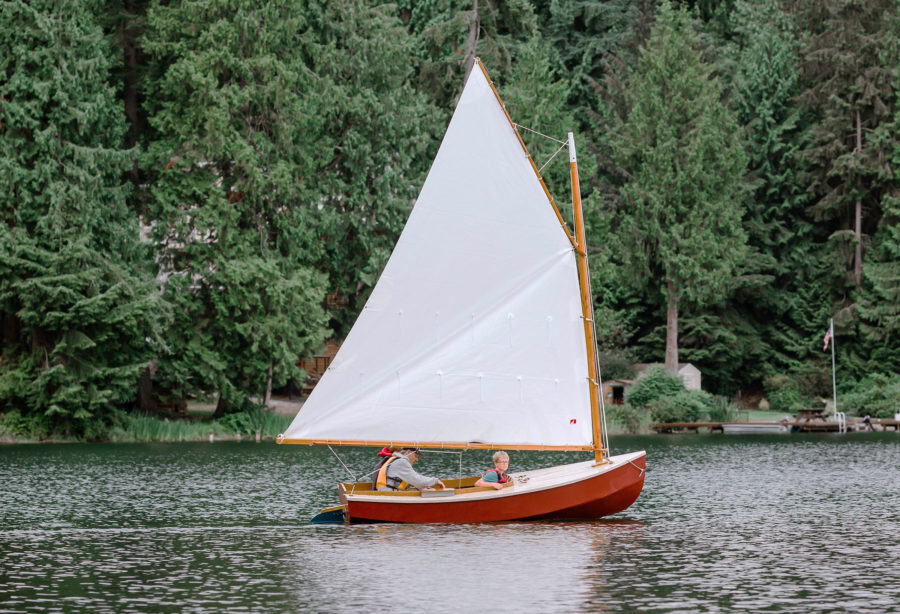
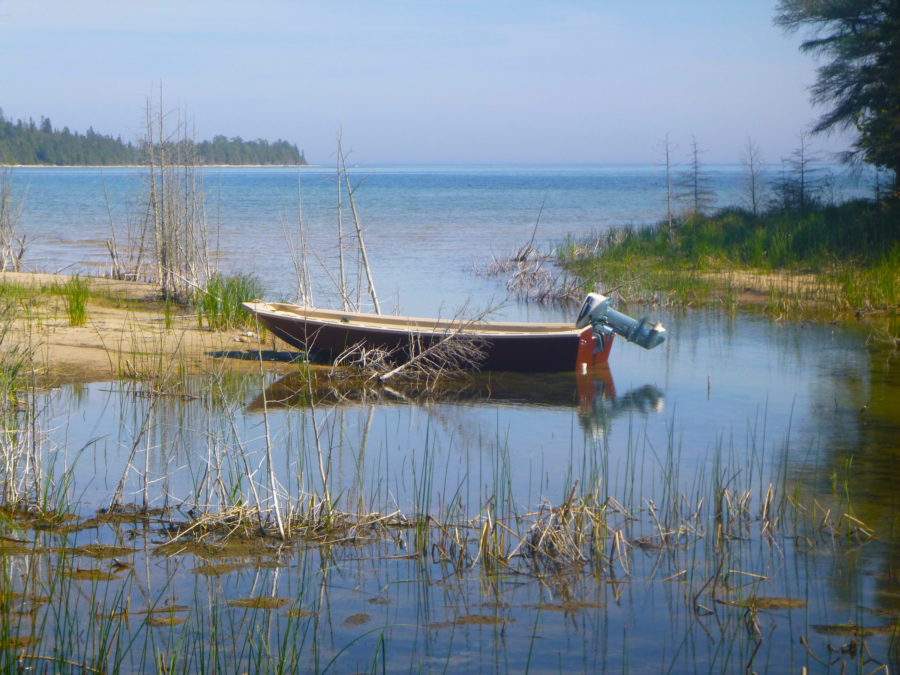
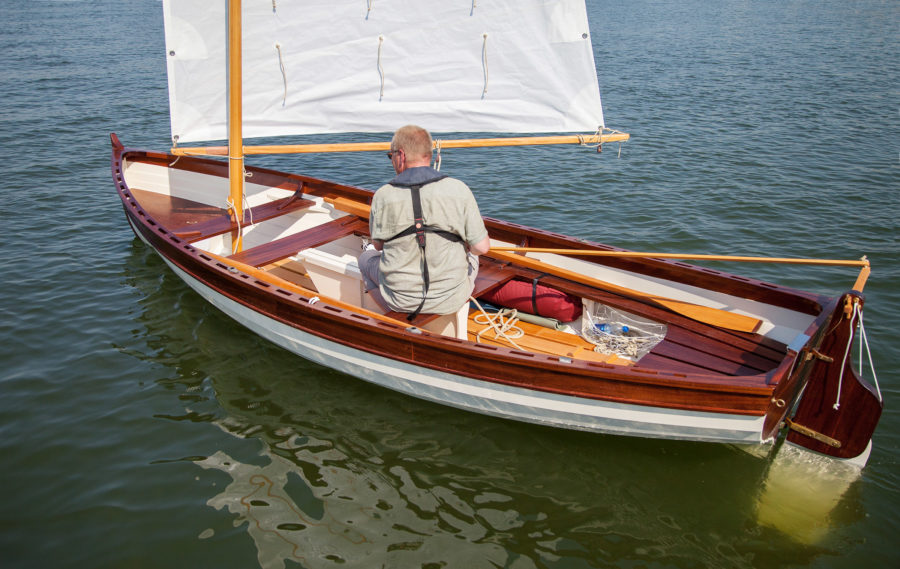
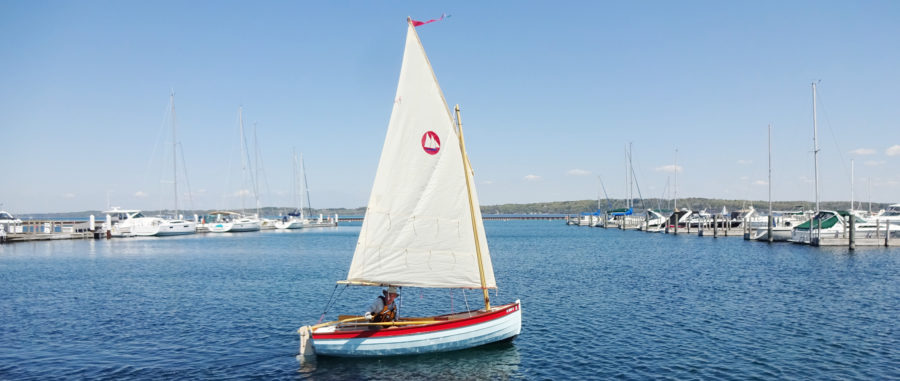
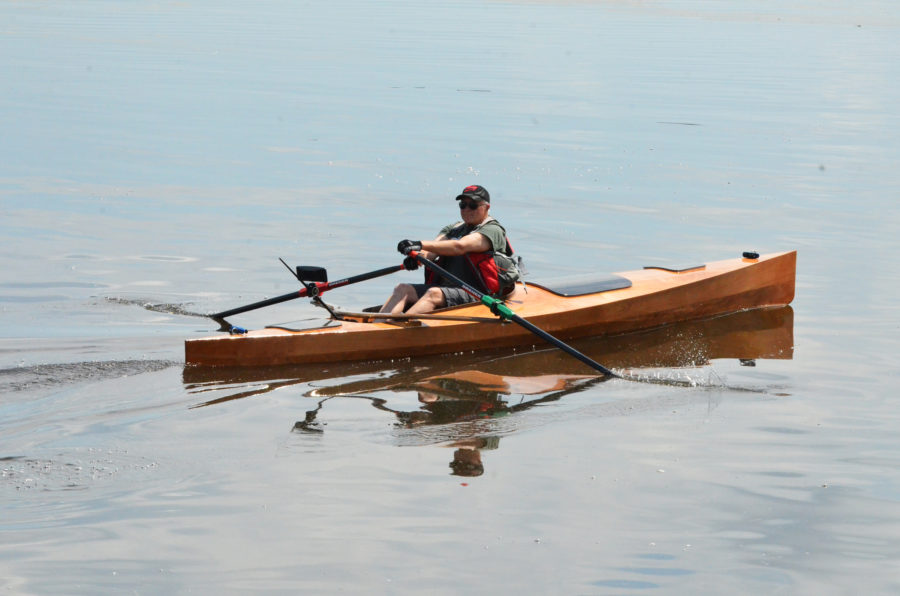
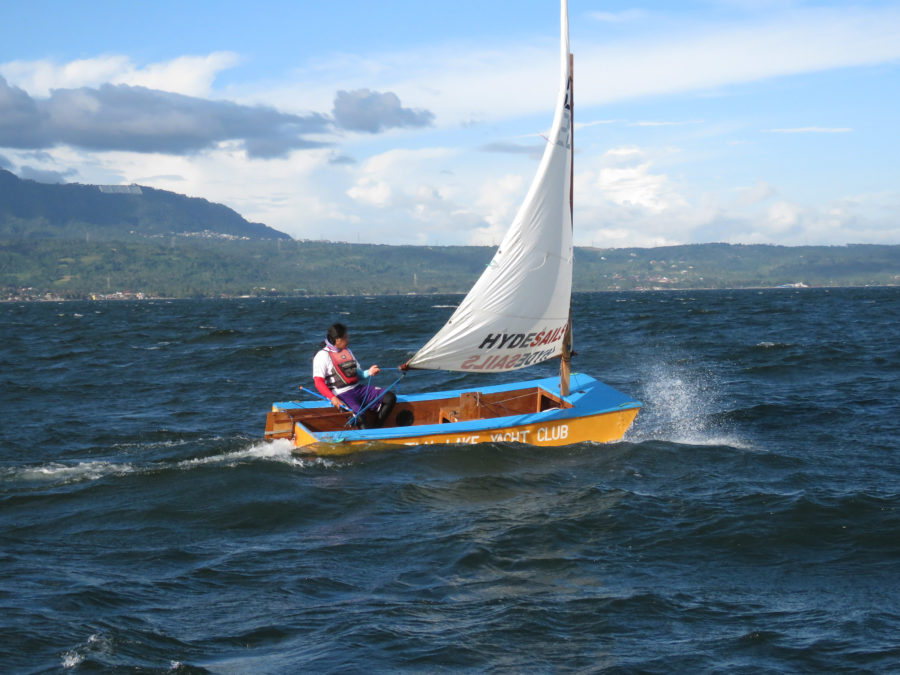
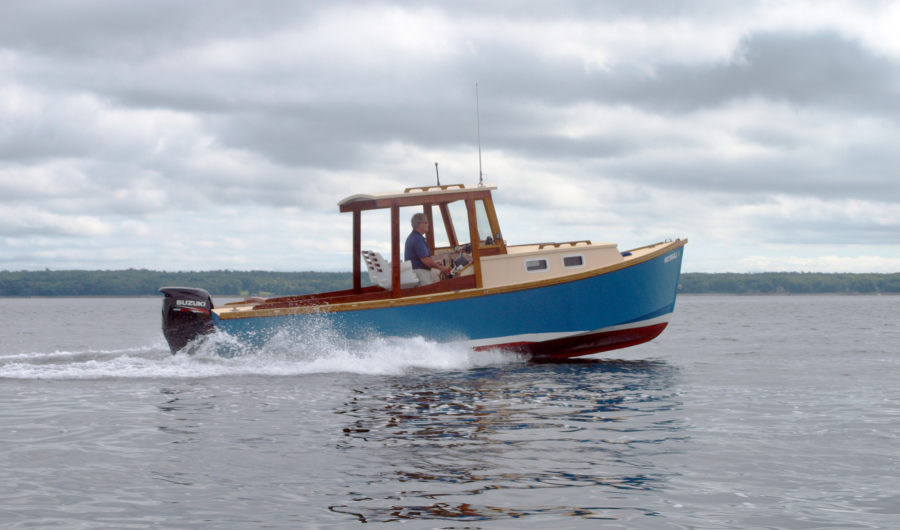
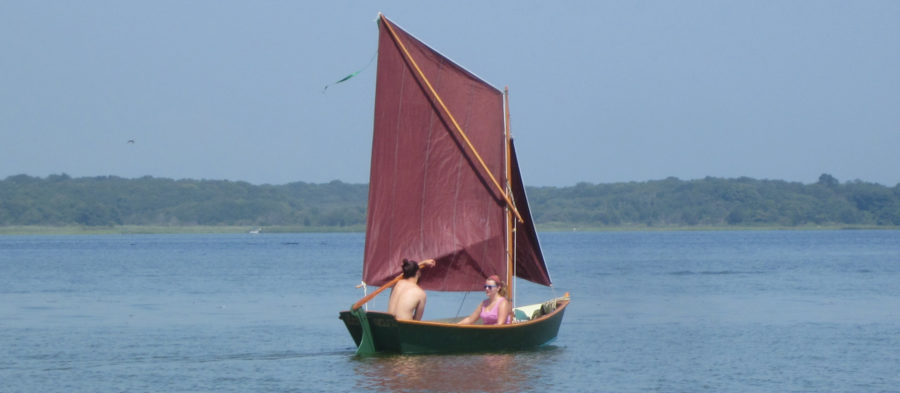
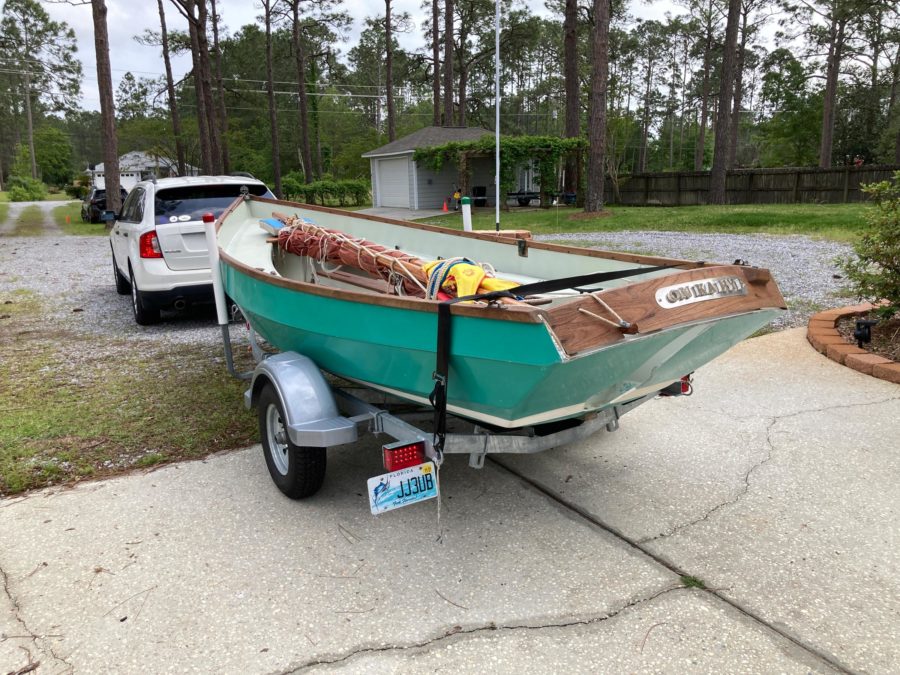
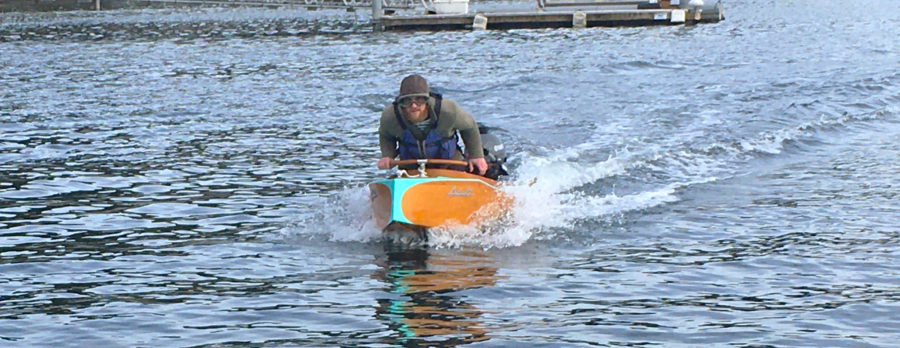
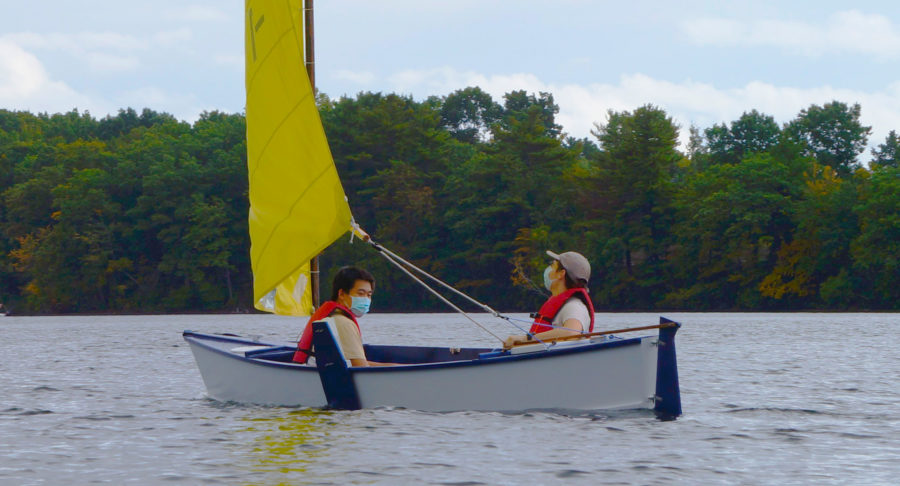
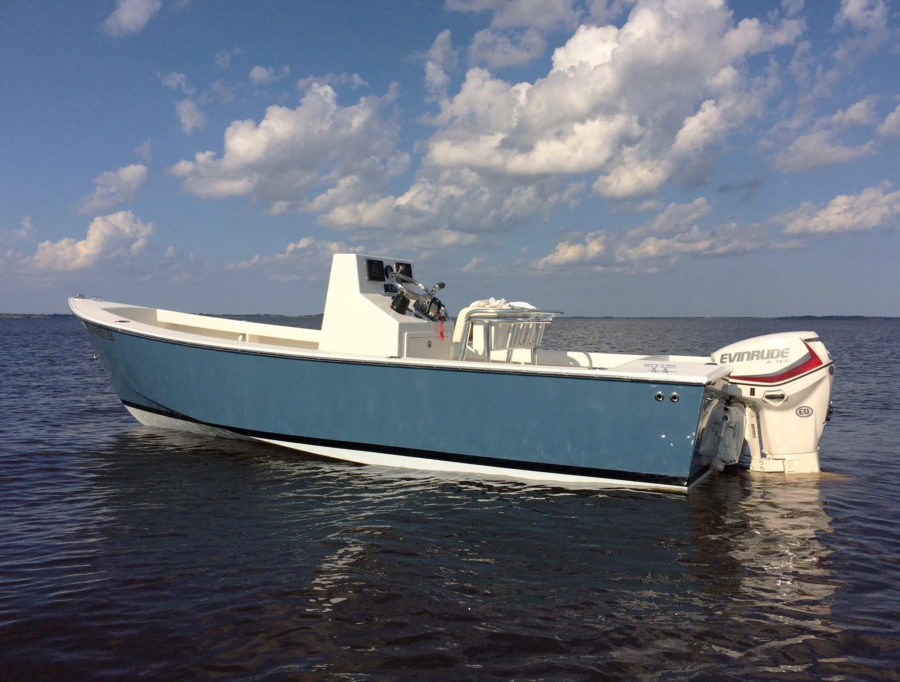
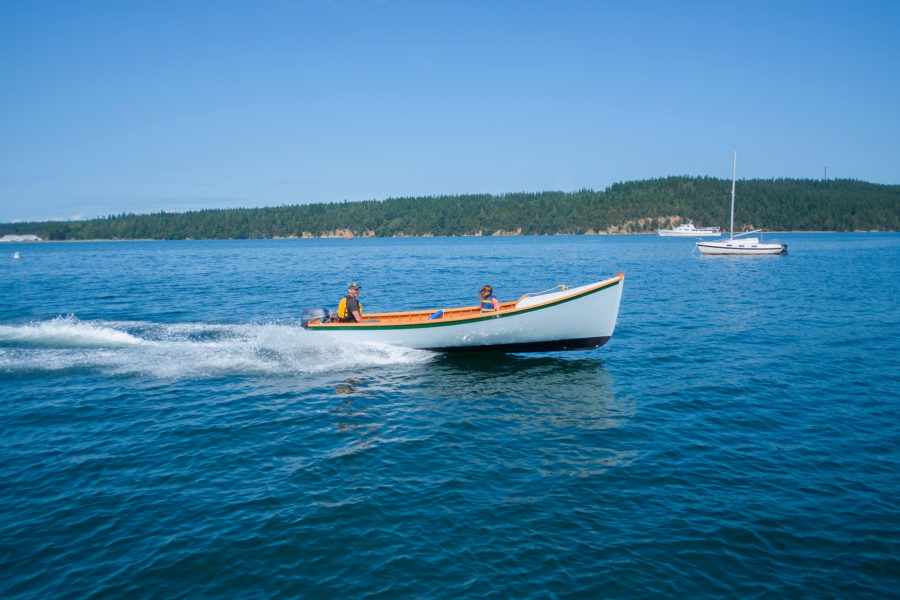
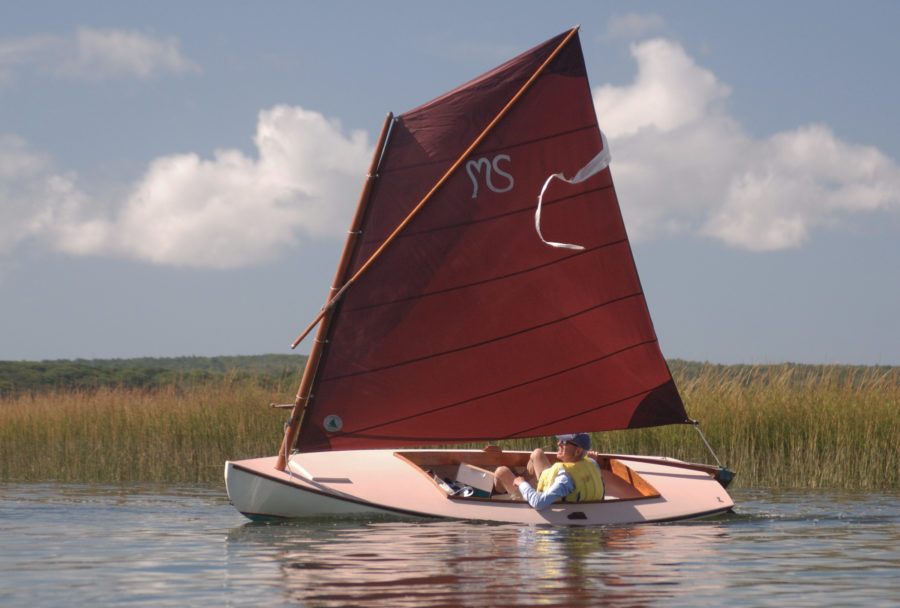
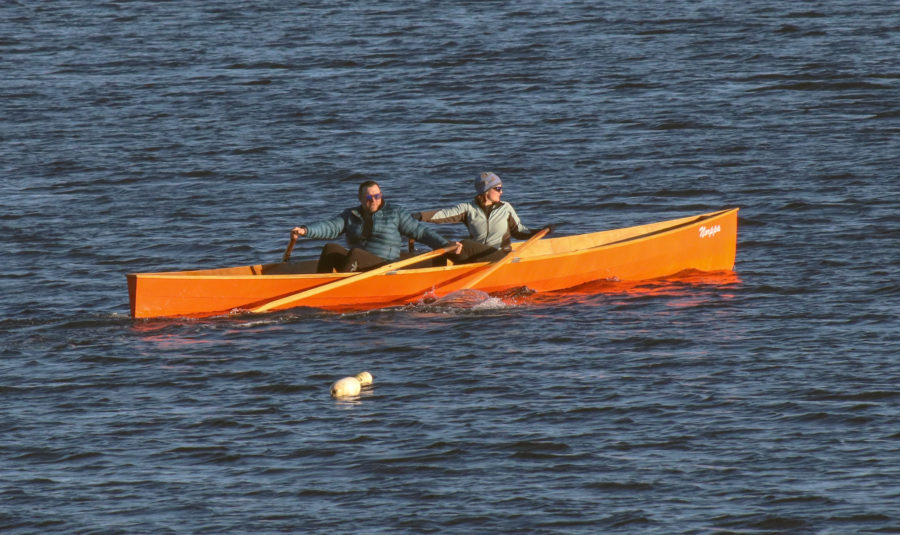
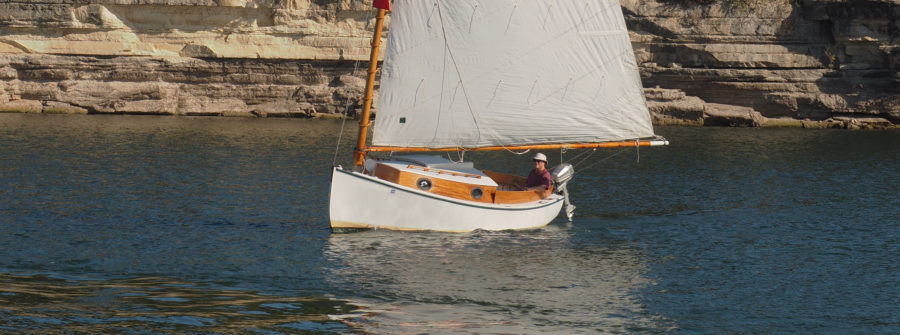
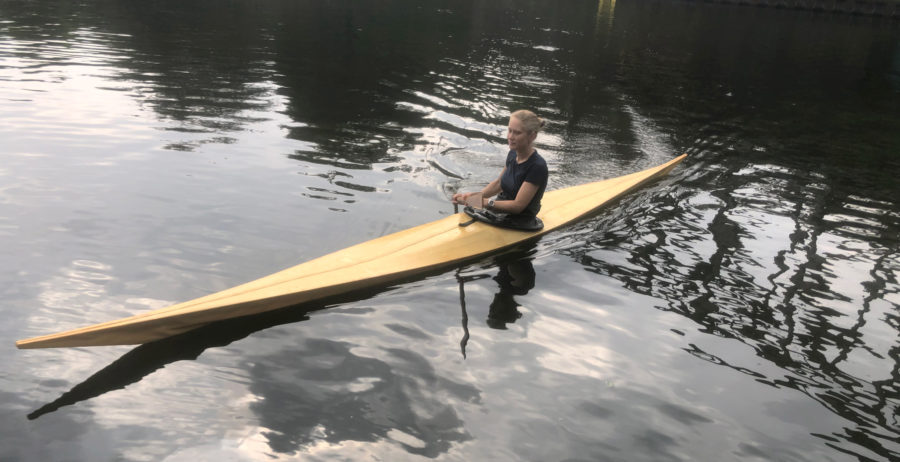
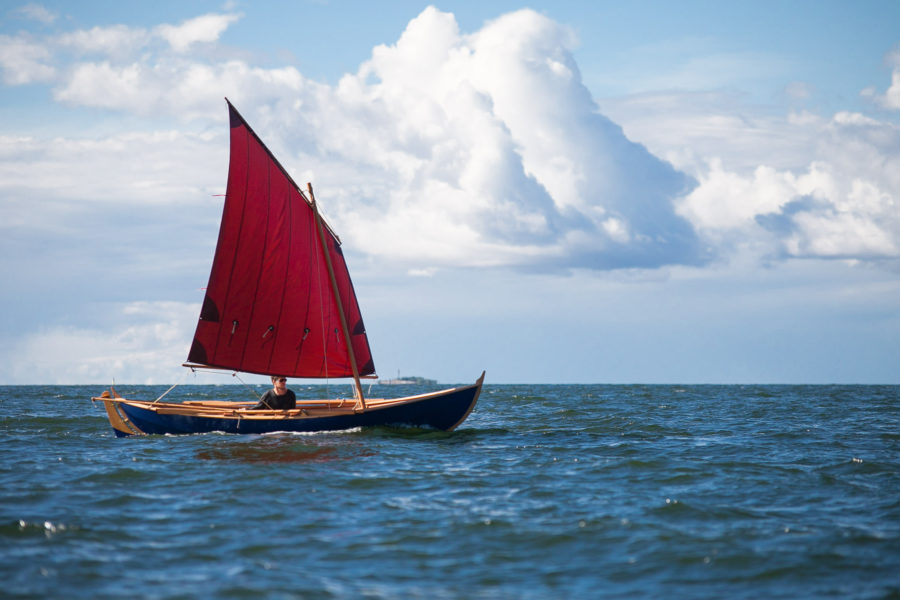
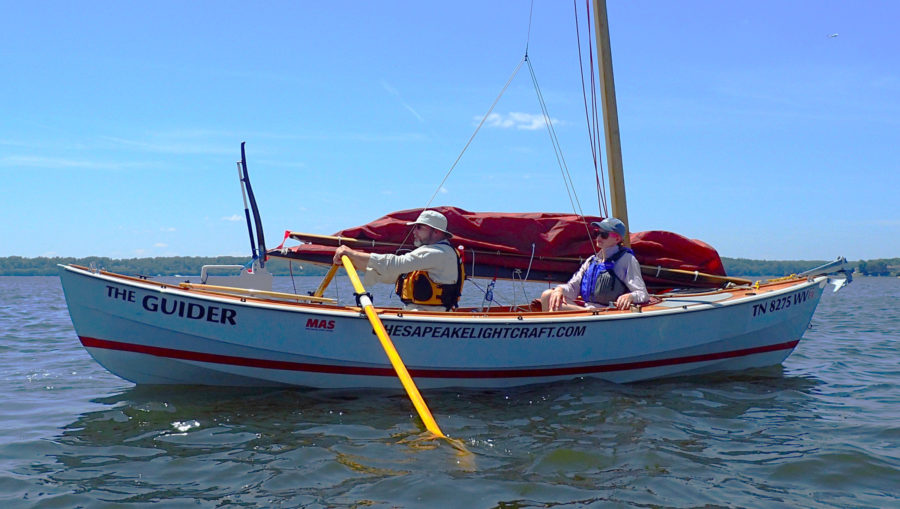
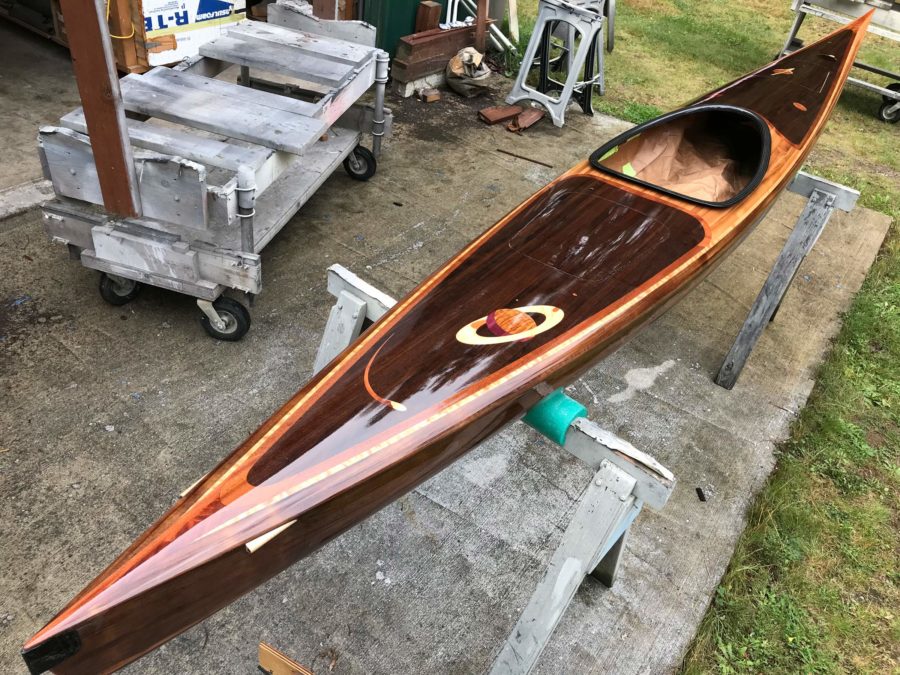
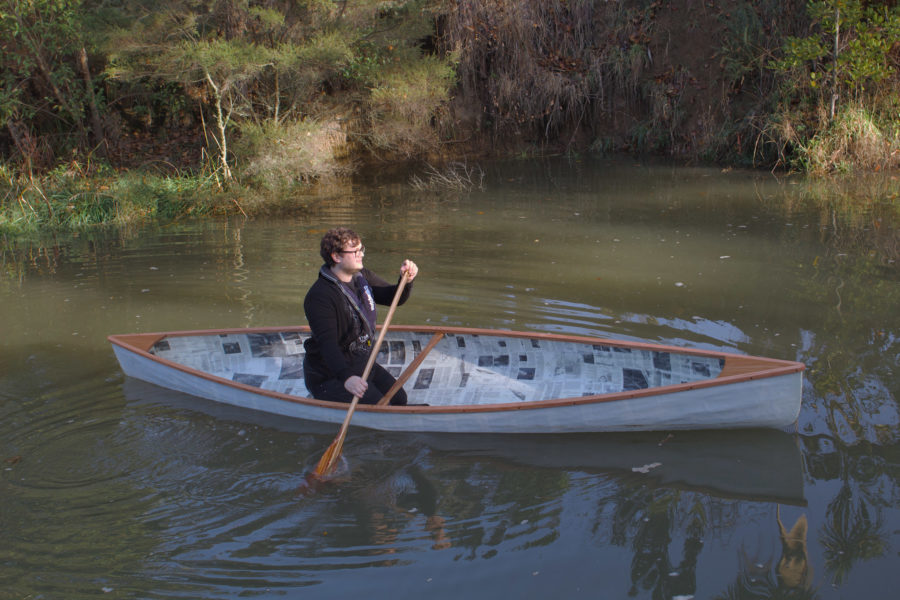
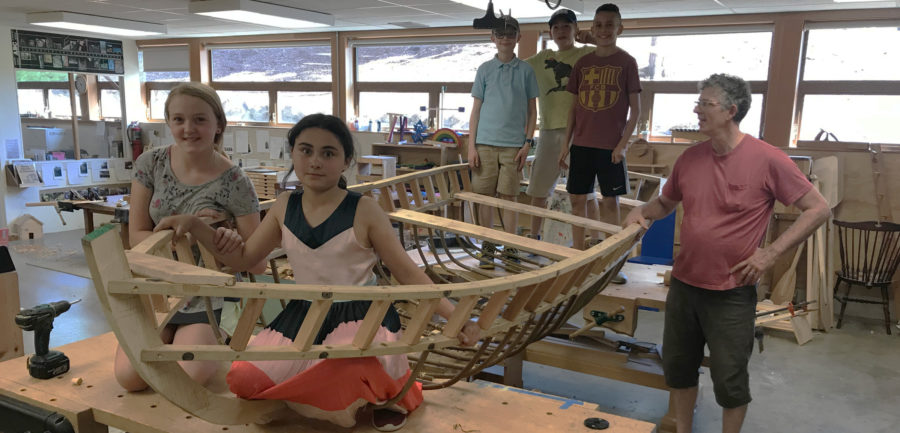
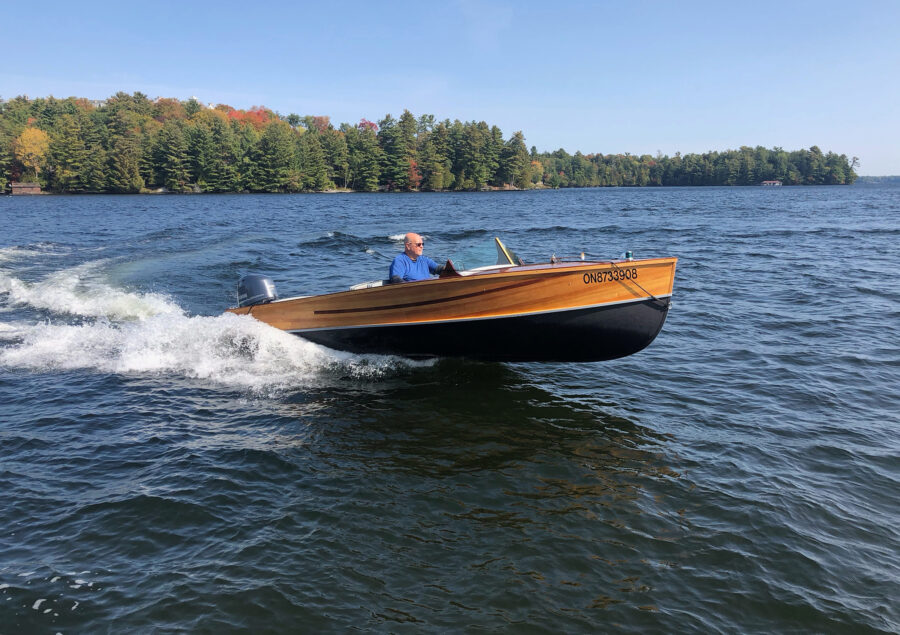
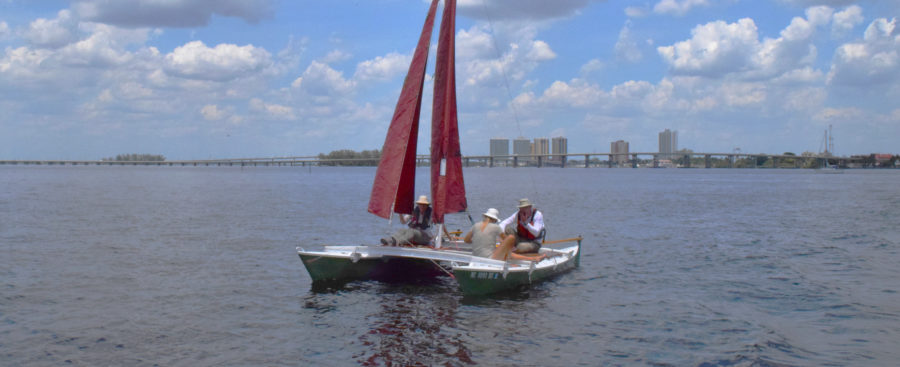
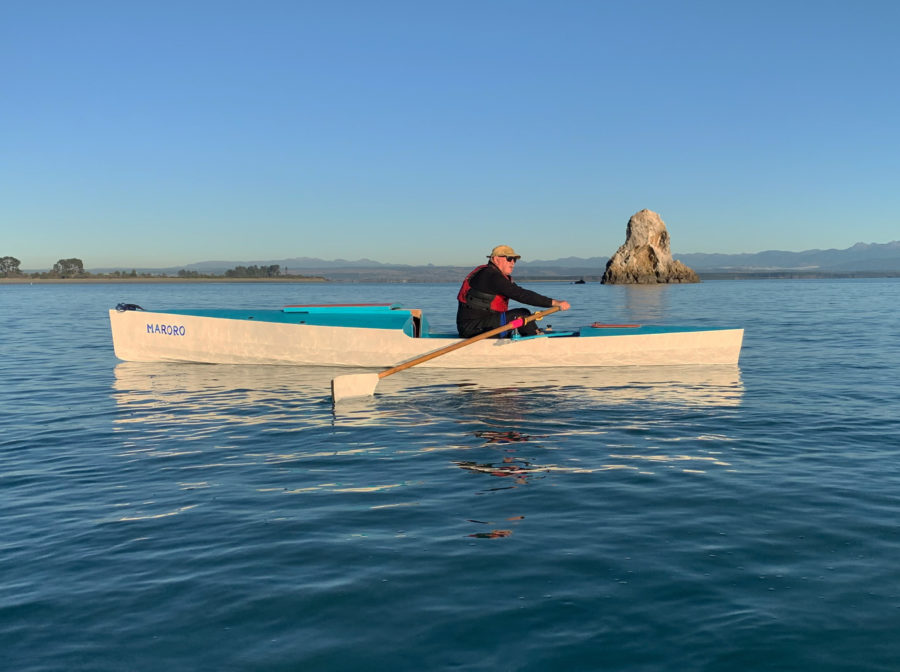
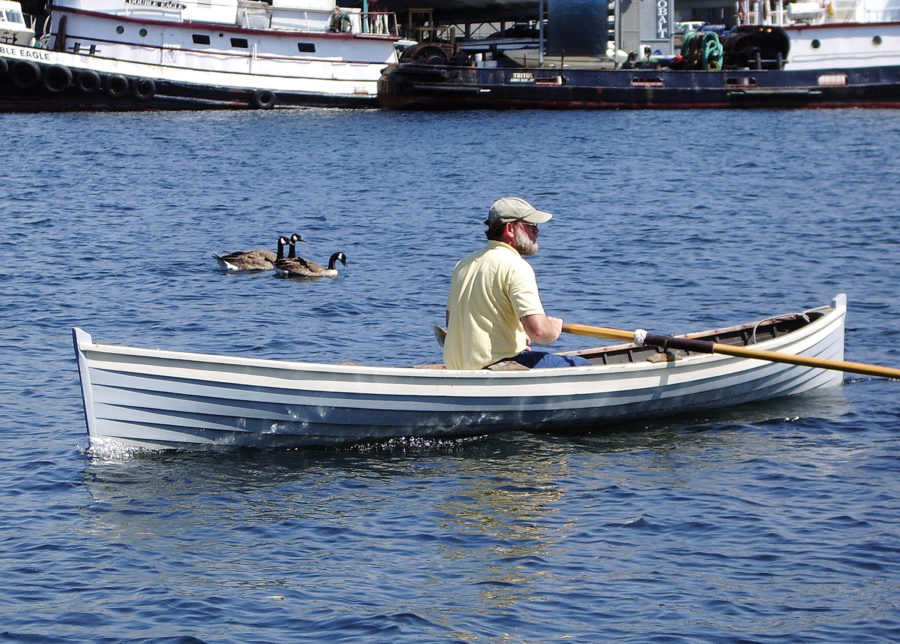
Colin did a really nice job with the Expedition Rowboat. And your build looks really nice.
I am a good friend and neighbor of Jim and I was able to witness his craftsmanship in the building of this boat, which is a kit, but Jim made so many of his own custom features it really is his boat and one of a kind. I love to see this baby in and out of the water, just a pleasure to look at from any angle. I would encourage another article on the building of it, what a masterpiece so many would enjoy seeing it put together.
Your comments are appreciated. Rob and Suzanne are hard-core wilderness canoe and kayak adventurers who spend their summers exploring Georgian Bay and myriad northern lakes. I fear my new boat can take a lot more than I can.
The Angus Expedition is an excellent boat for rough-water rowing — four of them, including my SHE AND AH, were entered in the recent Seventy48 race from Tacoma to Port Townsend. More than half the racers (including me) did not finish the race due to the extremely unfavorable conditions; but two home-built Expeditions (a father-and-daughter team) finished with admirable times. Before I quit the race about halfway through due to rowing-through-the-night exhaustion, I easily kept up with my companions rowing Aeros, and the cockpit stayed dry as I surfed the swells. I wouldn’t trade my Expedition for any other rowing boat out there.
Here’s how much gear I was able to stow for the Seventy48 event—with room for more!
I’d love to hear what kind of portage cart Jim is using, as I’ve found the hardest part of touring with my Expedition is hauling it, fully loaded, on the beach for camping; it is just too heavy for me to pull up the shore using fenders as beach rollers. I need a better solution before my next rowing adventure!
Ricki-Ellen, at the moment I’m using a stock kayak dolly from Sail but the wheels are too small and the frame definitely too lightly built for a loaded Expedition. I’m in the process of repurposing a golf cart with 18″ wheels for a much more solid ride and I’ll share that when it’s done. The Anguses had one of their bike trailers stolen in France and McGyvered a new one with BMX wheels, which are just the right size. The trick is coming up with a design that dismantles without tools.
I cobbled together a lightweight dolly from a golf cart and a dinghy dolly. It weighs 12 pounds and fits into my main cargo hold. It easily carries the loaded boat. All I’m missing is the tongue and the bike yoke.
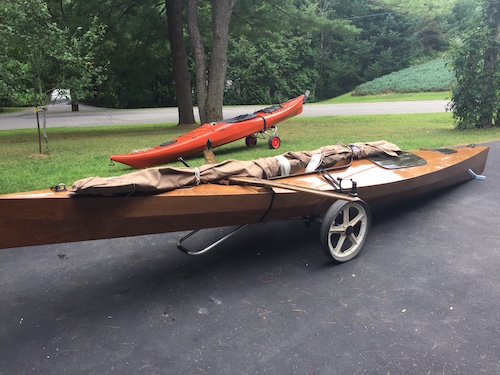
Great job building a boat like this. The first introduction said that this boat was for a trip, rowing from Scotland to Syria. If this trip eventuated, it would be good to see a report.
Cheers,
Ian
Colin and Julie Angus documented the trip in blog posts, a book, and a DVD. See the Rowed Trip page on their website.
—Ed.
G’day,
I’m a year or so late here but there is an “internal bungee system” mentioned which eliminates the straps and clips.
Does anyone have any diagram or links please?
Cheers from South Australia
Noel
Chesapeake Light Craft has a how-to article on an internal bungee system.
Hi Jim Duf,
i just read your article on your Expedition boat. I too have finished my Expedition build here in North Texas. As soon as the Red River fills back up, I plan to paddle down the Red River to the Mississippi and New Orleans. But I have a Honda Civic and no way to launch my boat yet. I noticed something on your boat that looked like a rearview mirror. Was that what I saw or something else? I am looking for a better solution to see behind me rather than those dinky little bicycle mirrors. Also, I have purchased the materials today for an aluminum cart for rolling it around to the waters, If anyone wants to see my build of this, let me know. I plan 20″ cart wheels from Amazon.
I got tired of a crick in my neck so I bought a $17 Kolpin UTV mirror and installed it in on a repurposed aluminum ski pole mounted on the back of my sliding seat assembly. Rugged, adjustable, removable and just what my neck ordered. I had looked at outrigger-mounted variations but they were in the way and neither rugged nor easily adjustable.
While I had been having conversations with the guy in the mirror, I’ll be replacing the ski pole with a longer carbon tube (another ski pole) because of a scary near miss in the Tay Canal last summer. The mirror concealed a rapidly approaching motorboat in the narrow waterway. It needs to be above head level to remove the blind spot.
Hi Jim,
Very nice article and boat! To be expected from you…I was happily surprised to see you here …and yes it is you!
Chris